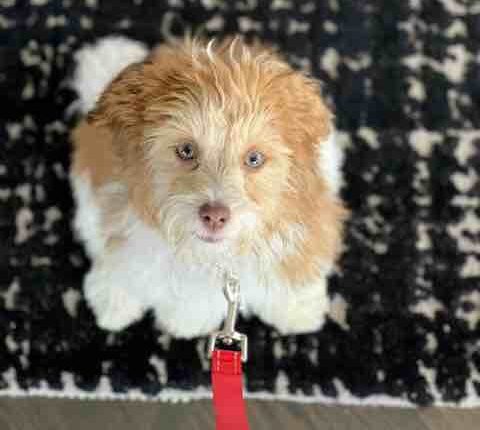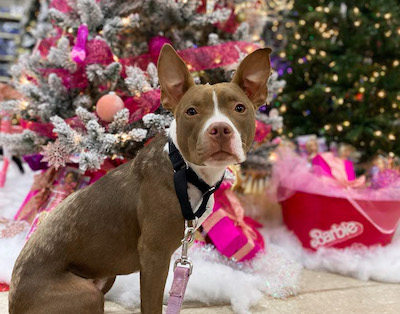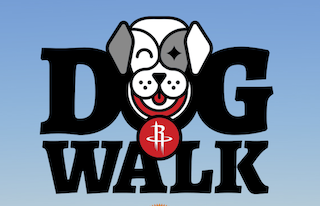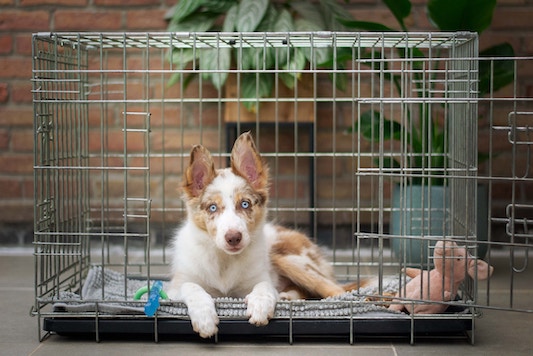When bringing home a new puppy, you can expect lots of play, laughter, and swooning over adorable moments. In order to maintain a good balance of positive energy and good behavior, your puppy will function best with daily routines and structure. One of the best ways for you to start implementing structure in the household and in public is to begin with teaching your puppy to “work” for you, and more specifically their attention! We recommend starting by teaching your puppy automatic sits. This behavior will show your puppy that having manners will gain the attention they so dearly want from you, and it reduces the likelihood of unwanted behaviors such as jumping, attention barking, and play biting.
What is an automatic sit?
An auto-sit is a behavior in which your puppy’s automatic response to asking for petting or other life opportunities is to sit. The key to this is to not verbally cue them, but to naturally shape the behavior through repetition and reinforcement. We want to begin teaching the puppy to work for access to rewards and build an understanding that training is fun!
Teaching Auto-sit
What You Will Need
- 6ft flat leash
- Fitted collar
- Kibble or treats of choice
- Treat Pouch
Check out the full list of puppy supplies we recommend acquiring before homecoming.
Luring Your Puppy Into Position
- Before you start, place a leash and fitted collar on your puppy to start, and have a pouch attached to your back hip ready and loaded with kibble or treats
- Get your puppy’s attention, take a piece of kibble and place it in the tips of your fingers. Show the puppy the food directly in front of their nose with your palm facing the sky.
- When they notice the food, slowly move the food up and over their head in alignment with their spine. The puppy should follow the food with their head until the weight shifts in the body and the bottom touches the floor.
- As soon as this happens, immediately say “good” and with one hand, reach to pet your puppy. With the other hand, deliver a treat.
- Continue to pet your puppy as long as they stay seated. This is 1 trial.
- Take a step back to get them standing again, then repeat the process.
Fading the Lure
- Once your puppy is sitting for you without much coaxing, you may begin to change the motion of your hand and fade the lure. Your hand should be held in the same position as before, but you will no longer have kibble in your fingers. Set the kibble on a table nearby, or use a treat pouch to have the kibble at easy access on the back of your hip.
- Start in front of the puppy’s nose, and raise your hand upwards as if you were zipping up someone else’s jacket in a smooth movement. Your puppy should respond the same by sitting.
- When your puppy sits, remember to bridge “good,” pet with one hand, and feed with the other.
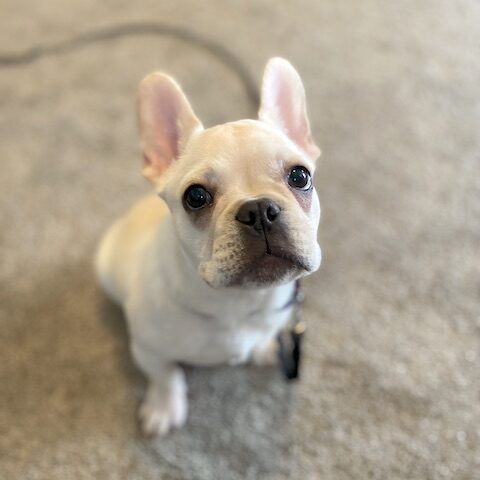
Maintaining Duration
- Once your puppy is predicting the behavior you’re asking for with this hand signal, you can practice maintaining the position for longer durations. To increase the time your puppy sits, start by treating and petting every 3 seconds they remain sitting. After 5-10 repetitions, you can increase to 5 seconds, and build in small increments of seconds with success.
- If your puppy gets out of position, you may try looking at them and waiting to see if they will automatically repeat the behavior for you.
- If your puppy does auto-sit for you, immediately bridge “good,” pet with one hand and deliver a treat with the other. Continue to pet your puppy to build duration.
Trainer Tip: It is best for their learning if you do not say “sit.” If they do not go back into the position within 10 seconds, show the hand signal.
Fading the Hand Signal
- After your puppy has built a good foundation of auto-sitting with duration, changing reinforcement to petting is the next step to generating a polite pup.
- When your puppy approaches you, or other family members,, see if your puppy will OFFER an auto-sit without a hand signal. If they attempt to jump or do not offer the behavior, you may need to show the hand signal to start. When the bottom touches the ground, calmly praise your puppy and reach to pet them with relaxing energy. Petting can be quite exciting for many puppies, and they may come out of position.
- As soon as the bottom comes off the ground, immediately stop petting. Show them that auto-sits are an on-and-off switch for attention. They will also feed off your actions. The calmer and more relaxing your petting and praise are, the more likely they will respond with the same energy.
- Try again until your puppy is offering you the position without the hand signal.
Increasing Difficulty
- To step up your hard work and generalize the auto-sitting further, practice having your puppy auto-sit when having guests over, or going out on walks and having friendly strangers approach to pet them.
- Auto-sitting for new people is the most difficult distraction for our little social butterflies, but reintroducing the food lure can help their learning. With time, repetition, and success, you’ll be able to fade the lure to a hand signal.
- Putting both your hands over your belt buckle is a useful final secondary signal to encourage your pup to sit without an exaggerated hand signal.
- Once your puppy is a master at following the hand signal in front of new people and distractions, you will be able to fade the signals out so that the behavior becomes a true, unprompted, automatic sit!
Troubleshooting
- If your puppy is jumping so much it’s hard to get a sit to occur.
- Increase the speed of your trials OR increase the value of your treats.
- If your puppy is struggling to auto-sit for strangers or guests.
- Go back to basics, and start with handing your guest a treat or ask them to deliver a hand signal to start. It may take 3-5 novel guests (people not living in the home) before your puppy begins to generalize auto-sits to others.
- Step on the leash, just enough to prevent your puppy from jumping up on you or the person to start. As the puppy is successful, you can take your foot off of the leash.
- If your puppy struggles to auto-sit for strangers outside.
- Practice and more practice! We recommend using the above leash shortening strategy by stepping on it before/while a stranger or friend approaches you. Use a friend or family member to start, and practice having them approach your puppy outside. Hand your friend treats, and when your puppy sits, your friend should feed with one hand and then pet with the other. Remember to keep the same rules for inside and outside!
As with any animal training, patience and consistency are key. We also recommend lots of brain breaks with play between. Learning takes lots of brain power, and play is a great reinforcer for your entire training session. If you need help luring your dog into sitting around household members or guests, we recommend reaching out to your local behavior consultant. Beyond the Dog would love to help you in our puppy Private In-Home Consultations, where all your puppy questions can be answered!
